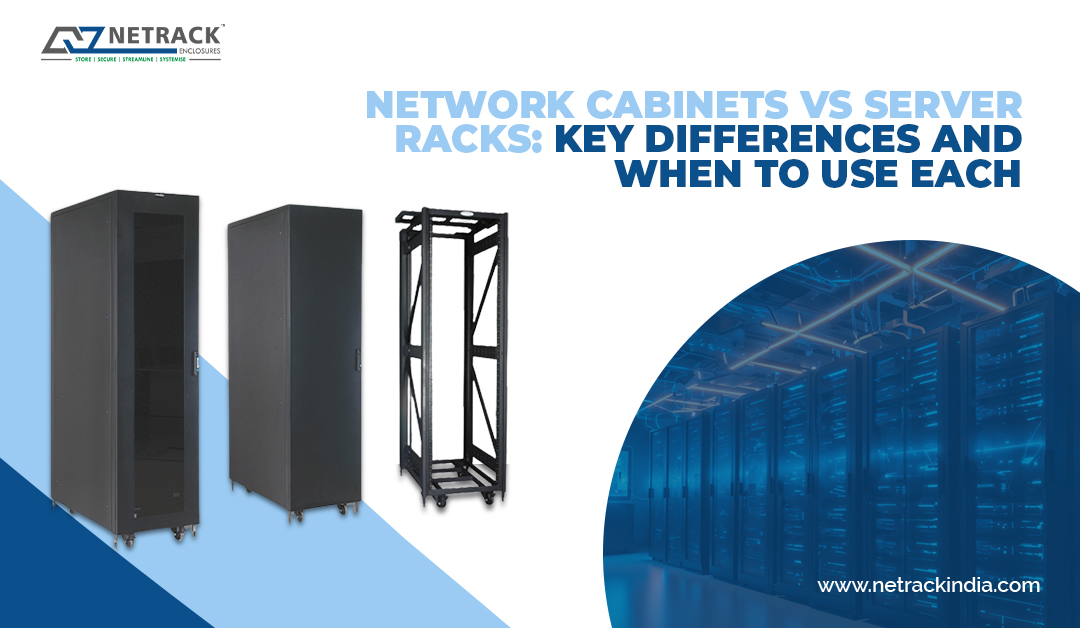Network Cabinets vs. Server Racks: Key Differences and When to Use Each
Businesses in today’s world, require - data centers, telecom rooms, and server enclosures to function efficiently. Hence, it is critical that the selection of the right infrastructure equipment be done with caution and introspection. Among the most essential components of this infrastructure are network cabinets and server racks. Although they look similar - but they serve different purposes. Hence, understanding the differences between the two and identifying when to use the right one can significantly impact the - efficiency, performance, and durability of the IT systems. Difference between a server rack and network cabinet Depth, compatibility, and cooling considerations A server rack is designed to house servers and other high-performance equipment. They are usually 19 inches wide as per standard measurements and engineered with durability to sustain devices in a vertical stack. They range from 600mm to 800 width and 1000mm to 1200mm in depth. They are usually used where heat management is critical to
Read More


